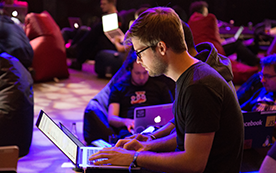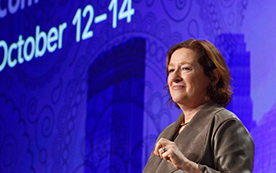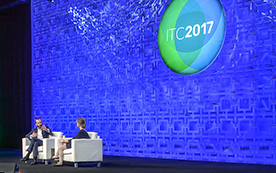
How to follow up and close business opportunities after an event, whether in-person or virtual
Up to 75% of contacts made at fairs and events do not receive any type of follow-up. This is wasting the time and effort you have invested in networking! Learn the keys to effective follow-up and closing deals, which have even more relevance when referred to virtual or hybrid events.
You just participated in a virtual networking event, such as Virtual Freightcamp, and you have collected full details from potential business partners and clients. And now what? Start tracking right away so the opportunities don’t get cold, or the work will have been for nothing.
At Freightcamp we have a lot of experience organizing in-person events and, above all, fostering cooperation between freight forwarding companies from around the world. So we know pretty well what works and what doesn’t.
Good practices
Start by sending a thank you message to the contacts you have made at the event. There are many? No problem: you can sort the contacts by priority. For example:
- Level 1: Valuable contact, essential follow-up.
- Level 2: Interesting contact, maintain the relationship.
- Level 3: Little relevant contact, courtesy follow-up.
It doesn’t have to be a long message, you can do a valued follow up in just three sentences. Don’t forget to mention where and how you met and why you think it might be interesting for the contact to talk to you again. It’s hard to remember everyone after an event!
Here’s an example of a follow-up message, which you can use as a template:
“Hello [insert contact name],
I’m [insert your name] and we met on [insert date] at [insert event name].
I just wanted to tell you that it was a pleasure talking to you. I found what we said about [insert topic of discussion] very interesting.
If you want us to continue talking about this, my phone is [insert phone number here].
Thanks a lot!”
At the same time, “Google” Internet contacts or consult the contact details from the event portal or materials if available, to complete the data you have by looking at their website, their Linkedin profile, their news, etc. It is advisable to dump all the information you have obtained in a CRM program, database or similar to create a contact sheet.
This information will help you prepare a personalized offer or proposal when your contact responds to the first follow-up message. Once they answer, propose a meeting, video conference, or call to discuss collaboration opportunities. The more personalized the contact, the greater the chances of success! Of course: do not try to achieve a sale or business on the first “date”: it takes up to six contacts to close a deal.
Bad habits
The main mistake we usually make in follow-up is waiting too long: 48 hours after the event, the contact gets “cold” and the chances of getting results plummet. On the other hand, you should not send the same generic message to all the contacts you have made, or add them to your mailing list without asking first: that would be spam!
Take the initiative offering cooperation to the valuable contacts, rather than waiting for them to reach you for business. They will also see you as a valuable connection.
Finally, you have to respond to the follow-up attempts made with you by other contacts that you established at the event, since reciprocity is essential for networking.




